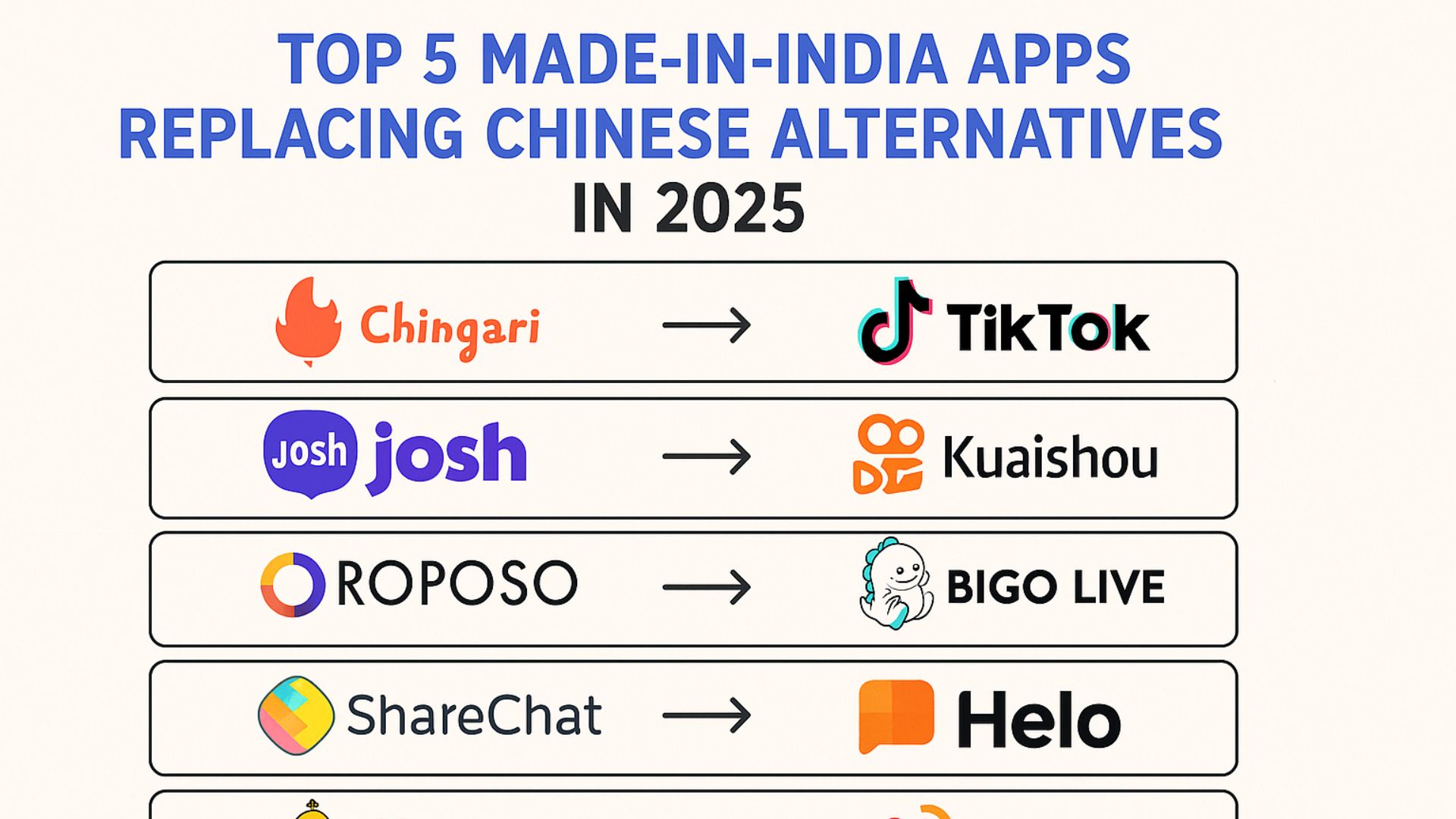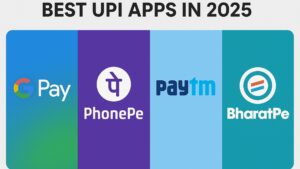The Dawn of Digital Self-Reliance: India’s App Revolution
The Indian digital landscape underwent a seismic shift in 2020. The unexpected ban on a multitude of popular Chinese mobile applications created an unprecedented void, but also a fertile ground for homegrown innovation. This moment marked the genesis of India’s journey towards digital self-reliance.
Table of Contents
On June 29, 2020, the Indian government initiated a ban on 59 Chinese apps, including widely used platforms like TikTok, Shareit, and UC Browser. This was followed by another significant ban on September 2, 2020, targeting 118 more applications, notably PUBG Mobile and Alipay. The stated reasons for these actions were concerns over data interception, surreptitious transfer of user data to servers outside India, and potential threats to the “sovereignty and integrity of India, security of State and public order”.
These bans were not isolated incidents but aligned seamlessly with the government’s broader nationalistic initiatives. The “Atmanirbhar Bharat” (self-reliant India) Abhiyan, launched as an economic package to support local manufacturers and service providers, found a powerful digital manifestation. Simultaneously, the “Digital India” program, aimed at enhancing online infrastructure and digital literacy, provided a framework for fostering indigenous tech. The “Digital India AatmaNirbhar Bharat App Innovation Challenge” further incentivized Indian tech entrepreneurs to build world-class solutions. The removal of dominant foreign players, by government directive, created a market vacuum. This was not merely a consequence; it was a calculated move to reduce foreign competition and provide a protected environment for domestic apps to grow rapidly without having to dislodge deeply entrenched incumbents. This policy intervention effectively acted as a forced incubation period, allowing Indian developers to capture a massive user base that was suddenly looking for alternatives. This demonstrates how government policy can actively shape market dynamics and foster local industry growth, moving beyond simple protectionism to strategic market re-orientation. The government’s strategy is multifaceted, aiming not just to protect national security by controlling data flow (digital sovereignty) but also to leverage this control to stimulate economic growth, create jobs, and build a robust domestic tech industry. The bans and subsequent support for Indian apps are two sides of the same coin, aiming to achieve both strategic autonomy and economic prosperity in the digital realm. This reveals a comprehensive national digital strategy where security and economic development are mutually reinforcing, setting a precedent for how India engages with global tech players.
This article will delve into five pioneering Made-in-India applications that have not only effectively filled the void left by their Chinese counterparts but are actively shaping India’s digital future in 2025. The discussion will explore their unique features, impressive growth, user sentiment, and how they stand out in a dynamic, rapidly evolving market.
The Catalyst: Why India Embraced Homegrown Alternatives
Prior to the bans, Chinese applications had established a formidable presence in the Indian market, leveraging their vast user bases and aggressive growth strategies. TikTok alone boasted over 200 million Indian users, Shareit had over 400 million registered users, and UC Browser commanded more than 130 million Indian users. These apps spanned diverse categories, including social content platforms like Helo and SHAREit, entertainment and short video apps such as TikTok, LIKE, and Kwai, and web browsers like UCBrowser and UCBrowserMini. Utility applications like BeautyPlus, Xender, and Cam Scanner, along with popular gaming apps like PUBG and Clash of Kings, and e-commerce platforms like ClubFactory, Shein, and Romwe, also held significant sway. India, with half a billion internet users, was the world’s second-largest app market by volume in 2019, recording 19 billion downloads, though monetization remained challenging, with Indians contributing only $120 million (0.3% of global consumer spending on mobile apps).
The Indian government’s decision to ban these apps was a direct response to escalating border tensions and persistent concerns over data security. The Ministry of Information Technology cited “multiple complaints from different sources about the abuse of certain mobile applications to intercept and surreptitiously transfer user data to servers located outside India”. The bans were explicitly enacted to protect India’s “dominion and the privacy of our people,” deeming these apps “prejudicial to sovereignty and integrity of India, security of State and public order”.
The bans provided a unique impetus for India’s indigenous digital ecosystem, aligning perfectly with existing government programs. The “Digital India” initiative, launched in 2015, aims to transform India into a digitally empowered society and knowledge economy by improving online infrastructure, increasing internet connectivity, and promoting digital literacy. It is projected to unlock a $1 trillion digital economy by 2025 and sustain 60-65 million digital jobs. The “Atmanirbhar Bharat Abhiyan,” introduced as a comprehensive economic package (₹20 lakh crores) to foster self-reliance, emphasized strengthening local manufacturers and service providers, reducing trade deficits, and reviving various economic sectors. It encouraged domestic innovation and reduced dependence on imports, creating a foundation for economic recovery and resilience. To actively support and build a strong ecosystem for Indian apps, the Ministry of Electronics and Information Technology (MeitY) partnered with Atal Innovation Mission – Niti Aayog to launch the “Digital India AatmaNirbhar Bharat App Innovation Challenge.” This initiative sought to identify and promote existing Indian apps with global potential and encourage the development of new ones, with evaluation parameters focusing on ease of use (UI/UX), robustness, security, and scalability.
The sudden and extensive nature of the bans, targeting highly popular applications, had a strategic impact beyond immediate security. India’s app market was characterized by a high volume of downloads but low monetization. Government initiatives like “Digital India” and “Atmanirbhar Bharat” were already in motion, aiming for digital economic growth and self-reliance. The App Innovation Challenge was launched immediately after the bans. This sequence of events suggests that the bans were not just a reactive security measure but a strategic policy intervention to reshape the market. By eliminating dominant foreign players, the government effectively cleared the path for domestic alternatives to gain rapid traction and scale, addressing the monetization gap and fostering a local app economy. This was a deliberate market re-orientation, creating a protected space for Indian innovation. This demonstrates how regulatory actions can be powerful tools for industrial policy, directing market forces towards national strategic objectives.
It is important to note that the landscape is not entirely black and white. Some previously banned Chinese apps have found pathways to re-enter the Indian market. For instance, Shein, the popular fashion retailer, returned via a licensing deal with Reliance, with a confirmed commitment to store all user data within India, ensuring its Chinese parent company has no access. Similarly, PUBG Mobile, banned in 2020, returned in 2021 as Battlegrounds Mobile India (BGMI) under South Korea’s Krafton. The return of these apps, under conditions of data localization and local partnerships, signifies that the Indian government’s primary concern is data governance and control, rather than simply the country of origin. This demonstrates a sophisticated regulatory approach where market access is contingent on adherence to India’s data sovereignty demands. It sets a precedent for foreign tech companies, indicating that compliance with local data laws is paramount for operating in the Indian market. This suggests that “Made in India” extends beyond just indigenous development to include a broader framework of data control and national security, even for foreign-developed applications operating within India’s digital borders.
Despite India being a massive app market by downloads , there is a significant gap between user acquisition/downloads and sustainable revenue generation. The country, despite 19 billion downloads in 2019, contributed only $120 million (0.3%) to overall consumer spending on mobile apps, indicating difficulty in monetization. For Moj, despite rapid user acquisition, there are reports of declining ad revenues and struggles with monetization. This highlights a fundamental economic reality of the Indian digital market: a vast, engaged user base that is highly price-sensitive and challenging to monetize effectively, requiring innovative business models beyond traditional advertising or in-app purchases.
Top 5 Made-in-India Apps Leading the Charge in 2025
1. Moj: The Short Video Powerhouse
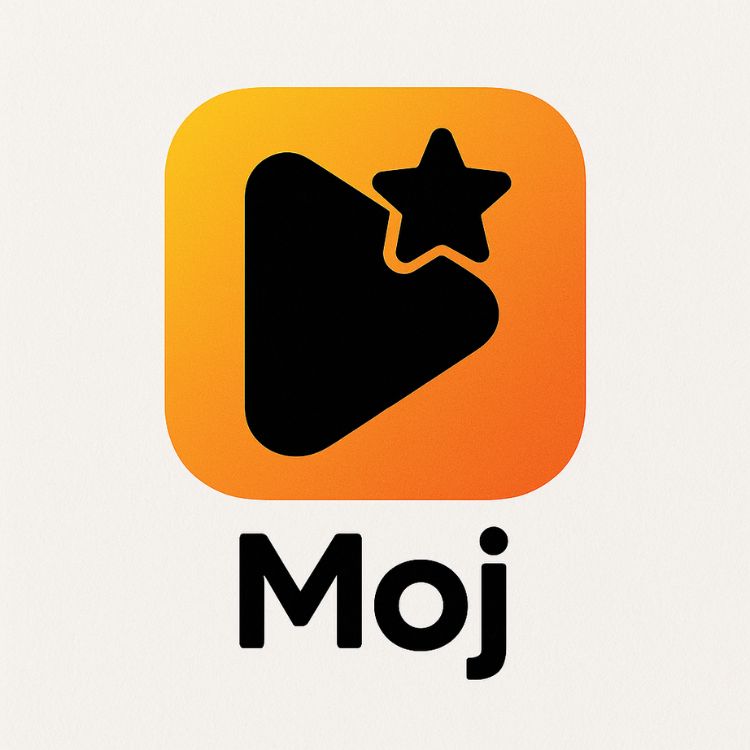
Moj emerged as a strong contender in the short-video app space, effectively replacing Chinese alternatives like TikTok, Likee, Kwai, and VigoVideo. Moj also absorbed MX TakaTak, another popular Indian short video app that emerged post-ban.
Moj, developed by ShareChat, was launched in July 2020, swiftly capitalizing on the void left by TikTok’s ban. It became the fastest short video platform to surpass 100 million downloads on Google Play within six months. A core strength of Moj is its deep focus on regional content and vernacular languages, supporting over 15 Indian languages. This caters to India’s diverse linguistic demographics, differentiating it from global platforms. The app provides a comprehensive suite of creative tools, including robust editing capabilities, AR effects, filters, stickers, and an extensive music library, empowering creators to produce engaging content. Moj actively encourages a vibrant creator community through features like live streaming, trending challenges, and monetization opportunities, aiming to build a world-class AI organization to support creators. The merger with MX TakaTak in 2022 was a strategic move to consolidate market share, aiming for a combined user base of 250 million.
Moj has surpassed 100 million downloads on Google Play , with older reports indicating 100 million installs by early 2021. On the Apple App Store, it holds a 4.5-star rating from 146K ratings. Users widely praise Moj for providing a platform to unleash creativity, join a thriving community of like-minded individuals, amplify their reach, and stay updated with the latest trends. Its user-friendly interface and intuitive design for video creation are frequently highlighted. Despite its popularity, Moj faces significant criticism. Some users report the app auto-downloading or reappearing on their phones, leading to perceptions of it being “bloatware” or a “virus”. More critically, there are concerns about the sustainability of its business model; reports indicate a more than 4x fall in daily active users post-MX TakaTak merger and a decline in advertising revenues, leading to worsening cash flow and challenges in creator monetization.
The initial surge in downloads for Moj was largely a consequence of the TikTok ban, creating a temporary vacuum that Moj efficiently filled. However, simply acquiring users, especially from Tier 2/3 cities where monetization is harder, does not automatically translate into sustainable revenue. The merger with MX TakaTak, intended to scale, paradoxically coincided with a decline in engagement and revenue, suggesting that the underlying business model for short-video apps in India faces significant challenges beyond just user numbers. This reveals a critical challenge for Indian app developers: converting a massive, price-sensitive user base into a profitable venture, indicating that market leadership in terms of downloads does not necessarily equate to financial sustainability. Additionally, user complaints about Moj auto-downloading or reappearing on their phones, calling it a “virus” , directly contradict the implicit promise of a user-friendly, trustworthy “Made in India” experience. While the app is praised for creativity , such intrusive behavior can lead to negative sentiment and potential uninstalls, undermining long-term user loyalty. This shows that even with a patriotic advantage, fundamental user experience issues can severely impact an app’s reputation and sustained growth. For Indian apps, building and maintaining trust requires not just national origin but also a commitment to non-intrusive, privacy-respecting practices that prioritize user control, a lesson crucial for competing in a privacy-conscious market.
In comparison to TikTok, which faced bans largely due to “extensive data collection practices potentially exceeding informed user consent” and national security implications , Moj, as an Indian-developed app, inherently benefits from the perception of better data sovereignty and local data storage, aligning with government regulations. While explicit comparative data on Moj’s privacy practices versus TikTok’s pre-ban practices is limited, its “Made in India” status is a key trust factor. Moj’s strength also lies in its deep integration of regional languages and culturally relevant content. This hyper-local approach allows it to resonate more authentically with India’s diverse audience, something TikTok, despite its global scale, struggled to fully achieve or maintain under scrutiny. Both platforms aim to foster a creator economy and monetize content. However, Moj’s reported struggles with declining ad revenues and user retention highlight the inherent challenges of monetizing a vast, often Tier 2/3 user base in India , a hurdle that TikTok’s global scale and earlier market dominance allowed it to navigate differently before its ban.
2. Ludo King: The Gaming Phenomenon

Ludo King effectively filled a massive void in the casual, mass-appeal gaming segment previously dominated by various Chinese casual games, including Clash of Kings and Mobile Legends. While not a direct one-to-one replacement for battle royale games like PUBG Mobile (which returned as BGMI under South Korean ownership ), its success highlights the power of culturally resonant, simple, and nostalgic gaming experiences in India.
Ludo King is an Indian free-to-play mobile game developed by Gametion Technologies Pvt Ltd, founded by Indian entrepreneur Vikash Jaiswal. Jaiswal conceived the idea in 2015 after encountering a Snakes and Ladders app, and the game launched in December 2016. The game is a modernized digital adaptation of Ludo, which itself is based on the ancient Indian game of Pachisi. This deep cultural connection provides an unparalleled nostalgic appeal for Indian users. Ludo King holds the distinction of being the first Indian gaming app to surpass 1 billion downloads globally. By November 2017, it had 120 million users worldwide, with approximately 100 million in India. It offers versatile gameplay modes, including online multiplayer for up to six players, offline play against AI, and local pass-and-play with friends and family. Beyond Ludo, the app includes popular sub-games like Snakes and Ladders and 7 Up Down. Features like integrated voice and text chat, a wide inventory of dice designs, player avatars, custom themes (e.g., Nature, Egyptian, Disco, Diwali, Christmas), and regular seasonal updates enhance the user experience. It is also optimized for low-end devices, ensuring wide accessibility.
Ludo King boasts over 100 Crore (1 billion) downloads on the Google Play Store. It maintains a Google Play rating of 4.1 stars based on 1.01 Crore reviews. Monthly installs were around 15 million as of mid-2025. Users widely praise Ludo King for its nostalgic charm, simple and addictive gameplay, and the ability to connect with friends and family online or offline. Its accessibility and frequent updates are also appreciated. A recurring complaint centers on the game’s heavy reliance on luck, with some users expressing frustration over perceived unfair dice distribution and repetitive mechanics across sessions. Occasional ads and in-app purchases can also interrupt the gameplay experience.
The extraordinary scale of Ludo King’s adoption, with over 1 billion downloads , can be attributed to its deep cultural resonance. The game is a modernization of the ancient Indian game Pachisi , and its founder, Vikash Jaiswal, noted its “nostalgic charm”. This cultural connection provides an immediate, organic bond with a massive audience, making it inherently more appealing than many foreign casual games that lack this intrinsic familiarity. This demonstrates that for Indian apps, leveraging unique cultural assets and local relevance can be a more powerful driver of adoption and sustained engagement than simply replicating global trends or features. Despite high ratings, user reviews mention “bad distribution between 2 or 4 players” and “everything bad that could happen, happened”. Some find it “boring” after a few rounds due to reliance on luck. While Ludo is inherently a luck-based game , user complaints suggest a perceived unfairness in the randomness, which can lead to frustration and a feeling of lack of control, despite the nostalgic appeal. This indicates a tension between preserving the traditional game’s essence and optimizing for digital engagement. Even highly successful apps with strong cultural ties need to continuously refine their core mechanics and address user feedback regarding perceived fairness and engagement to ensure sustained popularity and prevent user fatigue.
In comparison to Chinese casual games, Ludo King’s success is deeply embedded in its cultural familiarity and nostalgic appeal within India. This intrinsic connection provides a significant advantage over many Chinese casual games that lack such cultural roots in the Indian context. Ludo King’s straightforward, easy-to-learn, and addictive gameplay contrasts with some more complex or niche Chinese mobile games. Its optimization for low-end devices further broadens its reach across India’s diverse smartphone user base. While Ludo King incorporates ads and in-app purchases , its core appeal is the simple, engaging fun of a classic board game, rather than aggressive monetization strategies often seen in some Chinese free-to-play games.
3. Myntra: Fashion & Lifestyle Redefined
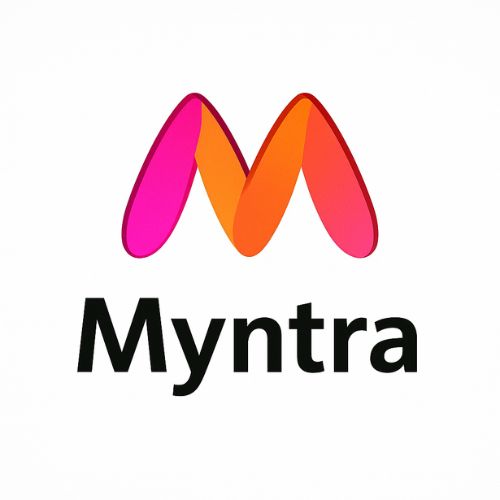
Myntra effectively replaced the market dominance and consumer trust that Chinese fast-fashion giants like Shein, Club Factory, and Romwe lost post-ban. While Shein has made a conditional return to India , Myntra continues to be a leading player in the fashion e-commerce space.
Myntra is a pioneering Indian fashion e-commerce platform, acquired by Flipkart in 2014 in a landmark deal (estimated Rs 2,000 crore or $330 million), becoming an integral part of the Flipkart Group. This acquisition aimed to dominate India’s online fashion segment. The platform offers an extensive collection of over 5 lakh styles from more than 5,000 brands across clothing, footwear, and accessories for all age groups. A key differentiator is its commitment to 100% original products, sourced directly from brands, addressing common concerns about authenticity with some fast-fashion Chinese platforms. Myntra has successfully captured the attention of Gen Z, with its “FWD” app-in-app proposition recording an impressive 2.25x surge in demand and 175% year-over-year growth in customers in 2023. The platform has also seen significant growth in its Direct-to-Consumer (D2C) category (70% YoY growth) and its beauty portfolio (3x market growth, 1500+ brands), solidifying its position beyond just apparel. Key features include refined search and filter options, integrated coupon codes, notifications for deals, fast and secure checkout (including Cash-on-Delivery), detailed product information with rich images and style notes, and a promise of timely delivery. It also offers an easy exchange and return policy for many styles.
Myntra boasts over 100 million downloads on the Google Play Store. It added approximately 75 million new app users in 2023. Its Google Play rating is 4.5 stars based on 50.7 lakh reviews , and its Apple App Store rating is 4.6 stars based on 1.1 million ratings. Users generally appreciate Myntra’s wide product range, curated fashion edits, user-friendly app interface, and the convenience of online shopping. Despite high ratings, Myntra faces a high volume of severe and recurring complaints. These include receiving fake or completely different products, empty packages, poor product quality that doesn’t match descriptions, significant delivery delays, and particularly “pathetic,” “untrained,” and “unprofessional” customer service. Users report extreme difficulties with the return and refund process, including self-shipping requirements and unhelpful support that denies returns based on dubious “quality checks”. There are also concerns about the prevalence of AI-generated reviews, though Myntra reportedly maintains a low rate.
Myntra’s high downloads and favorable average ratings stand in contrast to the numerous severe qualitative complaints in its reviews. Reviews consistently highlight “fake products,” “empty boxes,” “pathetic customer service,” and “difficult return/refund processes”. These are not isolated incidents but recurring themes. This reveals a significant disconnect: while Myntra has successfully acquired a massive user base and maintains high average ratings (possibly due to a large silent majority or effective review management), its operational execution, particularly in quality control and customer support, is severely lacking. This indicates systemic issues that could erode long-term customer trust and loyalty, despite initial market capture. The high ratings might mask underlying dissatisfaction that could lead to churn. For large-scale e-commerce platforms, initial user acquisition and high ratings are insufficient for sustainable success if core operational deficiencies like product quality and customer service are not addressed. User trust, once lost, is difficult to regain, especially in a competitive market.
The re-entry of Shein, a previously banned Chinese app, into the Indian market signifies an evolving competitive landscape. Shein’s return is via a licensing deal with Reliance, with user data stored in India , indicating compliance with India’s data sovereignty demands. This means Myntra cannot solely rely on its “Made in India” status as a competitive shield. It must consistently deliver superior product quality, efficient delivery, and excellent customer service to maintain its market leadership against compliant and potentially aggressive foreign competitors. The government’s success in enforcing data localization is also evident here, as it allows for controlled re-entry. The Indian e-commerce market is maturing, with data governance becoming a critical factor for market access, forcing even global players to align with national digital sovereignty priorities.
In comparison to Chinese alternatives like Shein and Club Factory, Myntra’s emphasis on 100% original products directly counters a major criticism leveled against fast-fashion Chinese platforms, which were often associated with inconsistent quality and authenticity issues. While Myntra struggles significantly with its own customer service and return processes , it operates within a more established legal and consumer protection framework in India compared to the often opaque or difficult processes of the banned Chinese e-commerce apps. Shein’s re-entry with data localization indicates it is adapting to Indian consumer and regulatory demands, posing renewed competition based on compliance. Myntra’s strategy of offering a curated fashion experience, fostering D2C brands, and targeting specific segments like Gen Z and beauty allows it to compete on value, brand, and experience, rather than solely on the low-price, high-volume model often employed by Club Factory and Shein.
4. JioPages: The Secure Browser
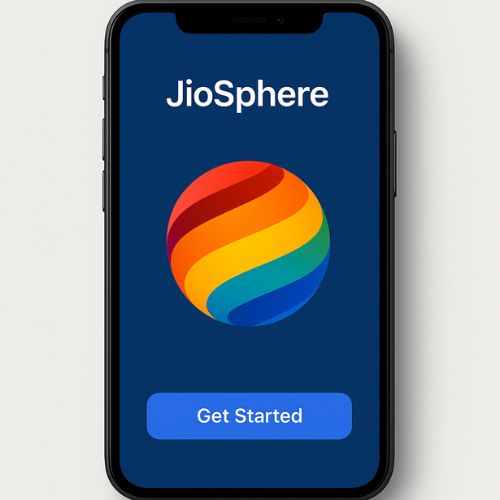
JioPages, now rebranded as JioSphere, effectively replaced UC Browser and UC Browser Mini. These Chinese browsers were immensely popular in India due to features like fast downloads and data compression, but they were eventually banned due to significant security and privacy concerns, including allegations of data transfer to Chinese servers.
JioPages is an Indian web browser developed by Reliance Jio Platforms, a major player in India’s telecom and digital services sector. It was designed and developed entirely in India to offer a safe, fast, secure, and uninterrupted browsing experience. A primary focus is on privacy and security. JioPages includes a built-in VPN, an ad-blocker (with options to whitelist domains), anti-tracking features, and an incognito mode that can be protected with a PIN, password, or biometrics. It also features a “Secure Mode” to block third-party tracking, cookies, and fingerprinting. The browser emphasizes localization, supporting 8+ (now 12) Indian regional languages for browsing content and personalized news feeds. This caters to India’s diverse linguistic user base. JioPages is optimized for both Android smartphones and smart TVs, featuring voice search and “Informative Cards” that display live updates on topics like stock market trends or cricket scores directly on the home screen. It is built on the Chromium Blink engine, which benefits from contributions from global tech giants like Google, Facebook, and Microsoft.
JioSphere (formerly JioPages) has over 1 million downloads on the Google Play Store , with another source mentioning 15 million+ downloads for the mobile app. Its Google Play rating is 4.0 stars based on 5.42K reviews. Users commend JioPages for its usefulness, user-friendliness, and the inclusion of security features like VPN and ad-blocker. Its regional language support and personalized news feeds are also appreciated. Some users find it intuitive, smooth, and stable, particularly for streaming on smart TVs. User feedback is mixed, with significant complaints about performance. These include frequent disruptions, slow connections, battery drainage, and issues with casting to TV or connecting to set-top boxes. Users report bugs, occasional white flashes in night mode, and the browser crashing, leading to the loss of open tabs. Concerns about privacy policy clarity exist, particularly regarding the collection of data like IP addresses, visited pages, and downloads, with no explicit mention of user deletion options. Furthermore, the app’s default settings do not block trackers or third-party cookies, raising questions about its “privacy-friendly” claims compared to other browsers.
JioPages heavily promotes its privacy and security features , directly contrasting with the reasons for UC Browser’s ban. However, user reviews express concerns about battery drain, crashes, and a privacy policy that collects data on IP addresses, visited pages, and downloads without clear user deletion options. Some also note that default settings do not block all trackers. While the intent to be a “secure browser” is clear and aligns with user concerns about data protection , the actual implementation and transparency fall short in some areas, leading to user dissatisfaction. This creates a gap between the marketed image and the lived user experience, potentially eroding the very trust it aims to build as a “Made in India” alternative. For apps positioning themselves on privacy, it is not enough to list features; transparent data handling, robust default privacy settings, and reliable performance are crucial for building genuine, long-term user confidence, especially in a market increasingly aware of data protection.
Jio is a “digital services behemoth” , and JioPages offers features like informative cards and TV optimization. The pursuit of a comprehensive “super app” ecosystem might dilute the focus on optimizing the core performance of individual components like the browser. While integrating various services is a strategic goal, if the fundamental browsing experience is buggy or slow, it can frustrate users who primarily seek a reliable browser. This highlights the challenge of balancing broad ecosystem integration with delivering a consistently high-quality experience in niche functionalities. For companies building super apps in fragmented markets like India, the risk of spreading resources too thin and compromising the quality of core services is significant. Success may depend on perfecting individual app experiences before or alongside ambitious integration plans.
In comparison to Chinese alternatives like UC Browser, JioPages directly addresses UC Browser’s notorious security concerns and data collection practices by offering explicit features like a built-in VPN, ad-blocker, and PIN-protected incognito mode. This focus on user privacy aligns with the growing data protection awareness in India and provides a significant competitive advantage. However, some user reviews indicate that the implementation of these privacy features needs to be more robust and transparent. JioPages excels in catering to the Indian audience with extensive regional language support and localized news content. As part of the broader Reliance Jio ecosystem, it aims for deeper integration with other Jio services , offering a more comprehensive digital experience tailored for Indian users compared to UC Browser. While UC Browser was known for its speed and efficient downloads , JioPages faces recurring complaints about slow connections and app performance. This suggests that despite its robust feature set and security focus, there is a need for significant optimization to match the raw browsing speed and stability offered by its predecessors.
5. Bharat Scanner: Document Digitization Made Easy

Bharat Scanner effectively replaced CamScanner, a dominant document scanning app that faced significant security vulnerabilities and was among the apps banned by the Indian government.
Bharat Scanner is an Indian document scanner app developed by KickHead Softwares Pvt Ltd, a National Award Winning Software Company (Govt. of India). It is trusted by over 1 million users and positions itself as a “perfect camscanner alternative”. Key features include the ability to create PDFs, scan various documents (notes, sensitive documents like Aadhaar cards, invoices), and create multi-page files. It supports night mode scanning with a flashlight option. A major advantage is its commitment to security: it allows direct saving and syncing of scanned documents to Google Drive, with users having the option to remove app access, and all files are saved in the phone’s local storage. Crucially, Bharat Scanner is completely free and operates with no watermark, addressing common user frustrations with CamScanner’s freemium model. It includes a QR Code Scanner and Barcode Scanner. The app offers image enhancement features like magic color, gray mode, B&W, and original filters, and can compress PDFs without compromising image quality. It is developed by a team of Indian Engineers and IITian pass-outs, a point of national pride.
The Bharat Scanner PDF scanner app has over 10 million downloads on the Google Play Store. It has a rating of 4.1 stars based on 7.12K reviews. Users praise Bharat Scanner for its ease of use, security features (like Google Drive sync and local storage), and the absence of watermarks, making it a preferred free alternative. The inclusion of QR and Barcode scanning is also a valued feature. However, user reviews highlight several areas for improvement. Common complaints include pixelation of PDFs after scanning, automatic rotation of scanned documents, and issues with the cropping interface (where only edge buttons are functional). Some users note that the image contrast after cropping is not as good as CamScanner, and the automatic border adjustment could be improved. A significant point of feedback is that the app relies on the phone’s built-in camera rather than having its own scanner, and some effects are not as user-friendly as those in CamScanner.
Bharat Scanner’s emphasis on security, offering direct Google Drive integration and local file storage , directly addresses the privacy concerns that led to CamScanner’s ban. Its “free and no watermark” policy also removes a significant barrier and frustration point for users, positioning it as a user-friendly and trustworthy alternative. This focus on core utility, coupled with enhanced security and a free model, provides a strong competitive edge. However, user feedback indicates that while the app provides essential functionality, there is a gap in refining the core scanning and image processing experience. Complaints about pixelation, automatic rotation, and less effective contrast compared to CamScanner suggest that while security and accessibility are strong, the app needs to invest further in image quality and user interface refinements to match the functional polish of its predecessor. This highlights the ongoing challenge for Indian apps to not just fill a void but to surpass the technical sophistication of global counterparts. The complaints about pixelation, automatic rotation, and issues with the cropping interface suggest that while security and accessibility are strong, the app needs to invest further in image quality and user interface refinements to match the functional polish of its predecessor. This demonstrates that even with a strong value proposition (free, secure), continuous improvement based on detailed user feedback is essential for long-term user satisfaction and market leadership.
In comparison to CamScanner, Bharat Scanner directly addresses the critical security vulnerabilities and data privacy concerns that led to CamScanner’s ban. By offering local storage and Google Drive synchronization with user control , it establishes a higher level of trust. Bharat Scanner’s completely free model and absence of watermarks offer a significant advantage over CamScanner’s freemium approach, which often gated advanced features or added watermarks. While CamScanner was lauded for its OCR capabilities and image processing , Bharat Scanner’s user reviews suggest that its image quality and editing tools, particularly cropping and contrast, still require refinement to fully match the experience of its banned counterpart.
Conclusions
The landscape of India’s digital economy in 2025 stands as a testament to strategic policy interventions and burgeoning indigenous innovation. The government’s decisive bans on Chinese applications, driven by national security and data sovereignty concerns, effectively cleared a path for Indian alternatives to flourish. This was not merely a reactive measure but a calculated move within the broader “Atmanirbhar Bharat” and “Digital India” initiatives, aiming to foster digital self-reliance and economic growth. The re-entry of some foreign apps under strict data localization terms further underscores India’s evolving regulatory maturity, prioritizing data governance over outright protectionism.
The success stories of apps like Moj, Ludo King, Myntra, JioPages, and Bharat Scanner highlight the potential of India’s homegrown tech ecosystem. These applications have leveraged cultural relevance, addressed specific user needs, and, in many cases, prioritized privacy and security. However, the journey is not without its challenges. The paradox of high downloads versus monetization difficulties, the impact of perceived “bloatware,” the fine balance between game mechanics and user satisfaction, and the critical importance of robust customer service remain key areas for development. As India continues its digital transformation, the sustained growth and global competitiveness of its domestic apps will depend on their ability to not only acquire users but also to deliver consistent quality, address user feedback diligently, and innovate on sustainable business models that resonate with the unique characteristics of the Indian market. The ongoing evolution of these apps will shape not just India’s digital future but also potentially influence global trends in app development and data governance.
FAQ Section
1. Why were Chinese apps banned in India? Chinese apps were banned primarily due to concerns over data privacy and national security. The Indian government cited complaints about the surreptitious transfer of user data to servers outside India and potential threats to India’s sovereignty and integrity.
2. What is the “Atmanirbhar Bharat” initiative’s role in promoting Indian apps? The “Atmanirbhar Bharat” (self-reliant India) initiative is a government program aimed at strengthening local manufacturers and service providers. The bans on Chinese apps aligned with this vision by creating a void that Indian developers could fill, fostering indigenous innovation and reducing reliance on foreign technology.
3. Have any banned Chinese apps returned to India? Yes, some previously banned Chinese apps have returned under new conditions. For example, Shein re-entered through a licensing deal with Reliance, committing to store all user data within India. PUBG Mobile also returned as Battlegrounds Mobile India (BGMI) under South Korea’s Krafton.
4. What are the main challenges faced by Indian apps despite high downloads? A significant challenge for Indian apps is monetization. Despite high download numbers, converting users into revenue (through ads or in-app purchases) remains difficult due to the price-sensitive nature of the Indian market. Some apps also face issues with user retention and declining ad revenues.
5. How does Moj compare to TikTok in terms of privacy? Moj, as an Indian-developed app, generally benefits from the perception of better data sovereignty and local data storage, aligning with Indian government regulations. TikTok faced bans largely due to concerns over extensive data collection practices and national security implications.
6. Is Ludo King purely based on luck, or does it involve skill? Ludo King, being a digital adaptation of the traditional board game Ludo, inherently involves a significant element of luck due to dice rolls. However, user reviews sometimes express frustration over perceived unfair dice distribution, suggesting that while luck is a core component, a sense of fairness in randomness is crucial for user satisfaction.
7. What are the common complaints about Myntra’s service? Despite high ratings, Myntra receives numerous complaints regarding fake or incorrect products, empty packages, poor product quality, significant delivery delays, and particularly “pathetic” and “unprofessional” customer service. Users also report extreme difficulties with returns and refunds.
